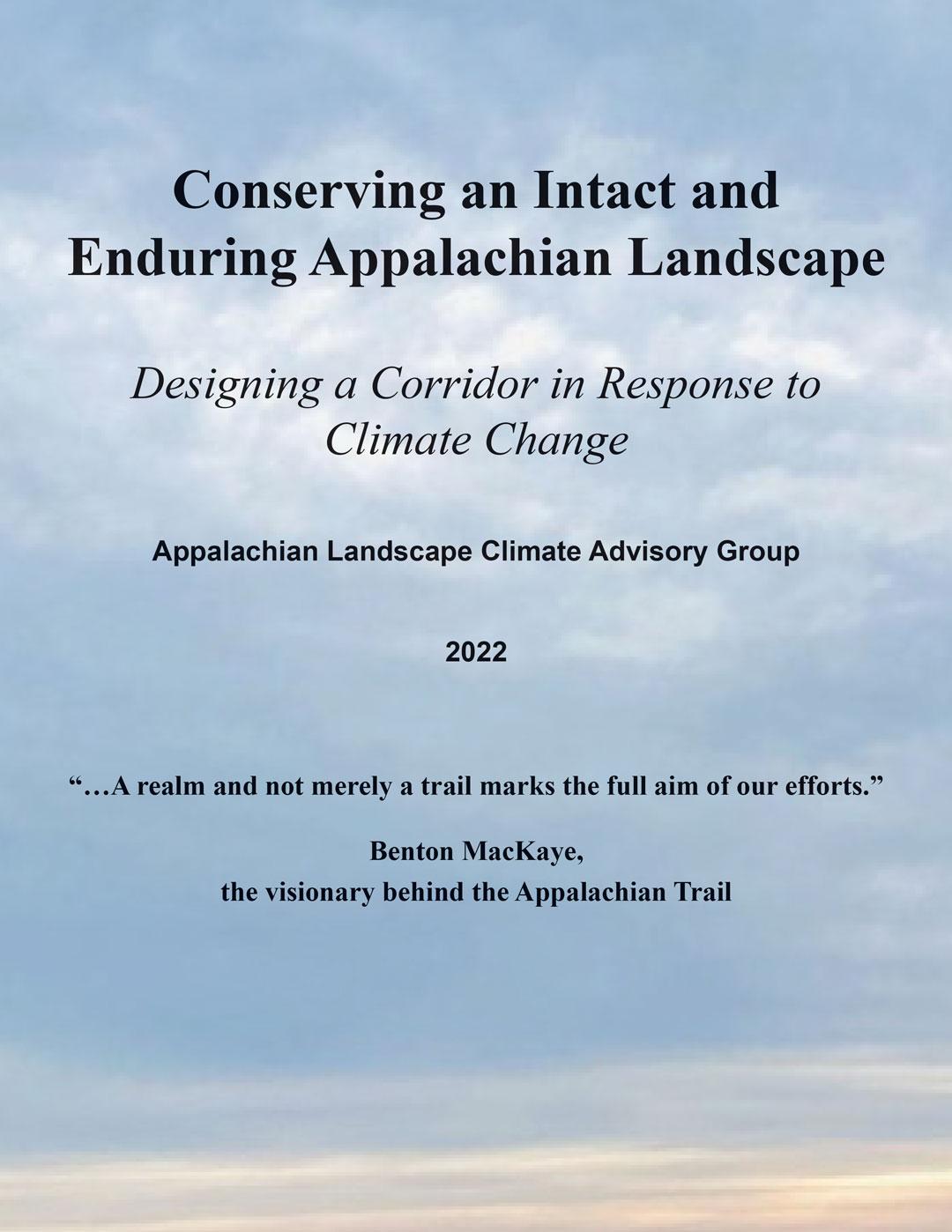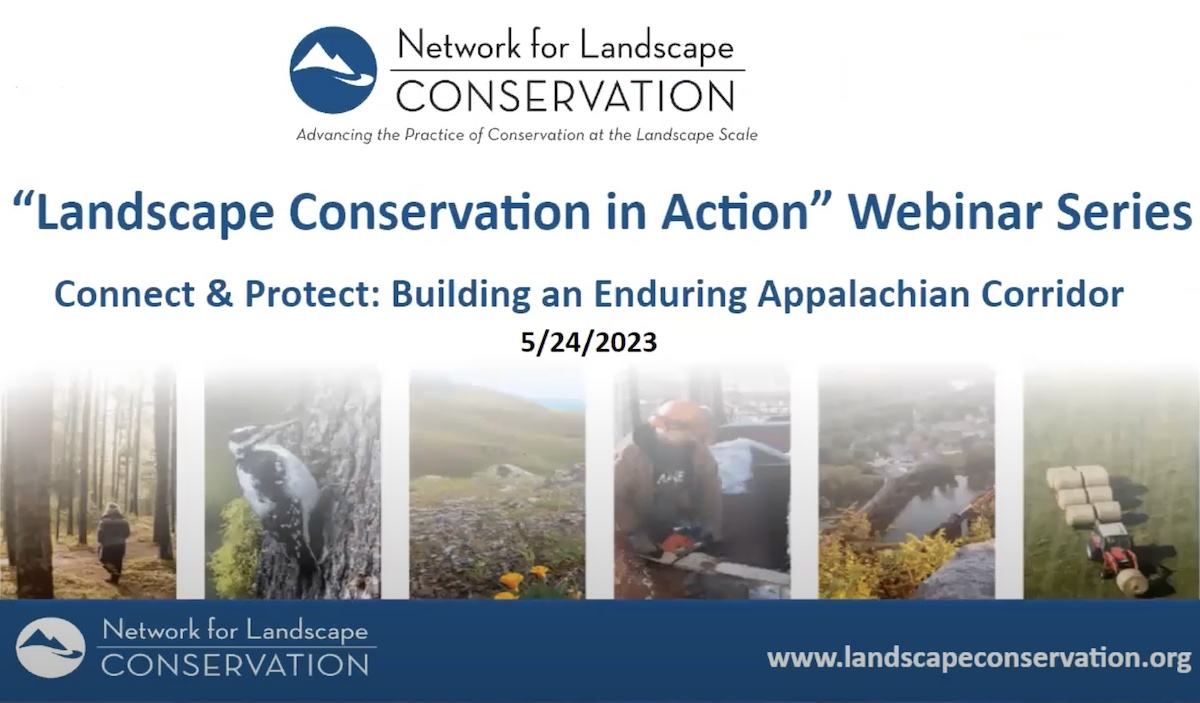Read the Report
Connect & Protect
Building an Enduring Appalachian Climate Corridor
For almost a century, the Appalachian Trail has existed as the backbone of conservation on the East Coast of the United States. The footpath, mountains, forests, rivers, and streams connect to form a natural network within a large landscape that is essential to adapting to a changing climate.
 Globally, the symptoms of a shifting climate like rising temperatures, the increase in frequency and severity of weather events and natural disasters, and the rapid loss of biodiversity have cascading effects that impact human health, safety, and livelihoods of communities. The Appalachian region must brace for these expected impacts. To adapt, managers of the Appalachian Trail and surrounding landscapes must consider these changing conditions to protect this natural and cultural resource for the next 100 years.
Globally, the symptoms of a shifting climate like rising temperatures, the increase in frequency and severity of weather events and natural disasters, and the rapid loss of biodiversity have cascading effects that impact human health, safety, and livelihoods of communities. The Appalachian region must brace for these expected impacts. To adapt, managers of the Appalachian Trail and surrounding landscapes must consider these changing conditions to protect this natural and cultural resource for the next 100 years.
This Appalachian landscape provides not only world-class outdoor recreation opportunities but is also globally significant for its abundant plant and animal biodiversity, healthy forests that draw in carbon, and valuable clean drinking water for more than 119 million people. Currently, just 26% of this unique corridor is protected and remains vulnerable to climate change and the growth of denser populations.
In 2021 and 2022, the Appalachian Trail Conservancy, the Center for Large Landscape Conservation, members of the Appalachian Trail Landscape Partnership, and dozens of other climate and conservation experts convened to explore ways to enhance the climate resiliency of the A.T. landscape. Their recommendations are included in the report “Conserving an Intact and Enduring Appalachian Landscape: Designing a Corridor in Response to Climate Change.”
This report builds awareness of climate change threats and highlights climate action opportunities to safeguard the region’s public safety, economic stability, and ecological health. It is a tool to integrate climate-smart actions into conservation strategies and strategic planning efforts, and it demonstrates the potential within the Appalachian landscape to help achieve ambitious goals set by the U.S. government related to conservation and the climate crisis. The report includes examples of programs that are advancing climate resiliency in the Appalachians as well as a set of recommendations for improving ecosystem integrity and connecting people to nature.
The vision for an Appalachian Climate Corridor laid out in the report would also result in:
- Healthier forests and wildlife habitats
- More diverse plant and animal communities
- Cleaner air and water
- Thriving and resilient towns
The work of the Climate Advisory Group was supported financially by the Volgenau Foundation.
Climate Corridor Story Map: Coming Soon!

Related Webinar
In May 2023, The Network for Landscape Conservation hosted a webinar inspired by and pivoting around the “Conserving an Intact and Enduring Appalachian Landscape: Designing a Corridor in Response to Climate Change” report. The webinar explores three perspectives on scaling up conservation near trails, and their unique opportunities and challenges for protecting wildlife corridors, ecological systems, biodiversity, and human connection to nature. In the webinar, the global, national, and local perspectives are presented. Katie Allen, ATC’s Director of Conservation, presented on the report, highlighting the connection between a national perspective and local action reflected in ATC’s on-the-ground work that supports the report’s recommendations.
Links to additional ATC Climate Content:
- Six-part Blog Series on Climate Change & the Appalachian Trail
- Climate Change and the A.T. Landscape: A Conservation with Climate Experts: A special online event with Charlie Chester and Harvey Locke on the concept of a Climate Corridor
- Appalachian Trail Landscape Partnership Meeting with Mark Anderson of The Nature Conservancy on the science and practice of conserving an Appalachian Climate Corridor
Discover More

The A.T. Landscape Partnership
A Dynamic Approach to Landscape Conservation
The Appalachian Trail Landscape Partnership is a dedicated coalition of local, state and federal partners led by the Appalachian Trail Conservancy and the National Park Service.

Official Blog
Climate Resiliency and the A.T.
Protecting and expanding climate-resilient forests along the Appalachian Trail is vital to ensuring their long-term survival.

Official Blog
The Pathway from Recreation to Conservation
Through our actions on the Appalachian Trail and beyond, we can help conserve a precious natural resource and inspire others to do the same.
